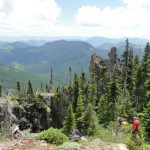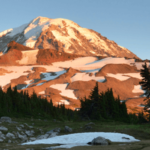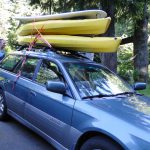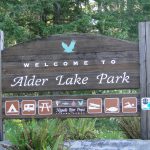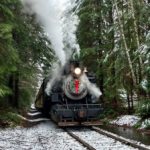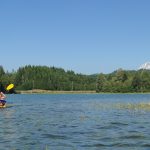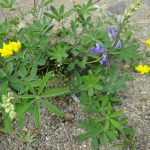High Rock Lookout
We’re thrilled that the great weather has brought thousands of visitors into Mt. Rainier National Park the last few weeks. However, long lines to enter the park has people asking about hikes and activities that are available in the Nisqually Valley, just outside the park entrance. Don’t worry – there are plenty of hikes and activities to enjoy in and around Ashford, where our Visitor’s Center is located. One such hike is the High Rock Lookout.
High Rock is one of the fire lookouts that was used by the Forest Service in pre-satellite days, so that staff could keep an eye out for smoke, indicating a forest fire. Since their purpose was to observe large swaths of land, fire lookouts are always located atop high peaks and offer incredible views. High Rock Lookout is just such a site, and still retains the original 1929 tower, perched at 5,700 feet and offering an incredible view of Mt. Rainier.
To get there, continue driving east on SR 706 from the Mt. Rainier Visitor’s Center in Ashford. After about 3 miles, turn right on Kernahan Road (also which turns into Skate Creek/FS 52), and drive 1.5 miles before taking a right on Osborn road. Immediately, take a left on FR 85 (it is unmarked), and continue 5.8 miles. When the road forks, take the left fork onto FR 8440 (unmarked) and continue 4.5 miles to the trailhead on the left.
An slightly longer, but smoother alternate route is to drive east on SR 706, turn right on Kernahan Road (which turns into Skate Creek/FS 52), and drive 4.6 miles before taking a right onto FR 84 (this is unmarked – it is one turn after the dirt road with the gate on the right) and keep on it for 6.8 miles, bearing right onto FR 8440 for the final 2.7 miles to the trailhead (on the right). This route is recommended for cars lacking 4-wheel drive.
The trail is 1.6 miles each way, but with a hefty 1,400 foot elevation gain. The well-used trail is wide and in great condition, following the spine of the ridge through hemlock and silver fir with wildflowers decorating the trail in the early summer months. The path steepens as it approaches the lookout, and towards the end hikers can choose to either scramble up a steep rock slope with a 600 ft. vertical drop to the right for the most direct route to the lookout, or wind a bit further through the forest and then cut back up along the ridge, approaching the lookout from the west with the cliff to the left.
High Rock sits on a prominent point on Sawtooth Ridge, and is a popular destination for nature photographers. From the lookout, enjoy the amazing view of the south face of Mt. Rainier, the Tatoosh Range, and Mt. St. Helens and Mt. Adams to the south and east respectively. Look down at Cora Lake, nestled in the forested valley below, and marvel at the sheer rock faces.
This hike takes on average of three hours round trip, and while the steep incline may intimidate hikers early on, the hike is finished in a short time and the view is well worth the effort. The fire lookout is open during the summer so hikers can go inside and check it out, but folks mostly spread themselves out among the rock, enjoying the sun and the spectacular views.
The view from the top has the most clarity in the early morning or late-afternoon, but the bugs are full-on at dusk and dawn. even during the day, bugs will keep most hikers moving steadily through the shade. The path is clear of snow as of early July, and bear grass, Indian paintbrush, and avalanche lilies color the landscape.
While this trail does allow dogs, dogs should be kept on a leash due to the dangerous ledge near parts of the trail. Similarly, this path is not recommended for young children. Since there are no public facilities, make sure to bring plenty of water and snacks.
Happy hiking to you and yours!

